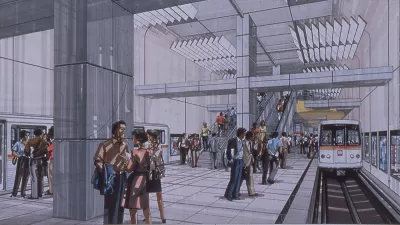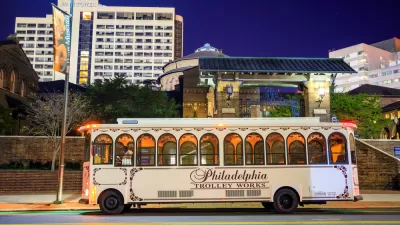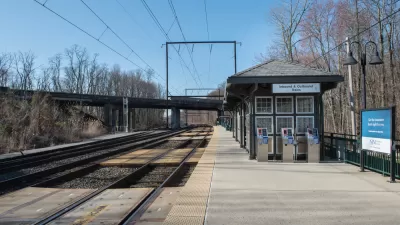In PlanPhilly, a discussion on Jarrett Walker's brand of humanities-infused transit planning. The wonky stuff is all well and good, but in the end it's all about simple access and freedom of movement.

"'Frequency is freedom,' said Jarrett Walker, earnestly in a philosophy lecture disguised as a talk on transit planning." [...] "'We all have a sense about freedom and imprisonment—It's about not being able to move. We are all in a prison, physically speaking, where the walls are where we can get to in a reasonable amount of time.'"
Jim Saksa writes about Walker's approach to transit planning, emphasizing the human dynamic before getting technical. For one thing, Walker insists on distinguishing between the "choice" rider (someone who has another option) and the "dependent" rider (somebody who must take the bus). "Imagine what kind of service the dependent bus rider would want, and deliver that, rather than trying to dream up a service for the choice rider."
Walker tends to eschew ridership predictions and overly-complex models. "It may be my philosophical training: I start with skepticism. [...] I start with what I know. That's why I start with geometry—I'm sure about that, and in a way that I'm not sure with psychology or human behavior."
Saksa suggests that SEPTA can take several lessons from Walker. "First, Walker emphasized the importance of maps—particularly frequency maps—in conveying the freedom offered by a transit system to its potential riders. Second, Walker noted that straight routes aligned in grid systems maximize a rider's abundance of access."
Read more from Jarrett Walker at his blog, Human Transit.
FULL STORY: Jarrett Walker's philosophy of public transit as means to freedom

Manufactured Crisis: Losing the Nation’s Largest Source of Unsubsidized Affordable Housing
Manufactured housing communities have long been an affordable housing option for millions of people living in the U.S., but that affordability is disappearing rapidly. How did we get here?

Americans May Be Stuck — But Why?
Americans are moving a lot less than they once did, and that is a problem. While Yoni Applebaum, in his highly-publicized article Stuck, gets the reasons badly wrong, it's still important to ask: why are we moving so much less than before?

Using Old Oil and Gas Wells for Green Energy Storage
Penn State researchers have found that repurposing abandoned oil and gas wells for geothermal-assisted compressed-air energy storage can boost efficiency, reduce environmental risks, and support clean energy and job transitions.

Greening Oakland’s School Grounds
With help from community partners like the Trust for Public Land, Oakland Unified School District is turning barren, asphalt-covered schoolyards into vibrant, green spaces that support outdoor learning, play, and student well-being.

California Governor Suspends CEQA Reviews for Utilities in Fire Areas
Utility restoration efforts in areas affected by the January wildfires in Los Angeles will be exempt from environmental regulations to speed up the rebuilding of essential infrastructure.

Native American Communities Prepare to Lead on Environmental Stewardship
In the face of federal threats to public lands and conservation efforts, indigenous groups continue to model nature-centered conservation efforts.
Urban Design for Planners 1: Software Tools
This six-course series explores essential urban design concepts using open source software and equips planners with the tools they need to participate fully in the urban design process.
Planning for Universal Design
Learn the tools for implementing Universal Design in planning regulations.
Heyer Gruel & Associates PA
City of Moreno Valley
Institute for Housing and Urban Development Studies (IHS)
City of Grandview
Harvard GSD Executive Education
Salt Lake City
NYU Wagner Graduate School of Public Service
City of Cambridge, Maryland





























